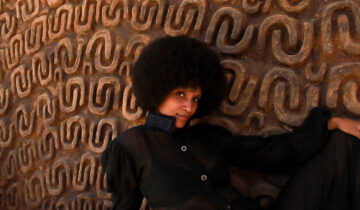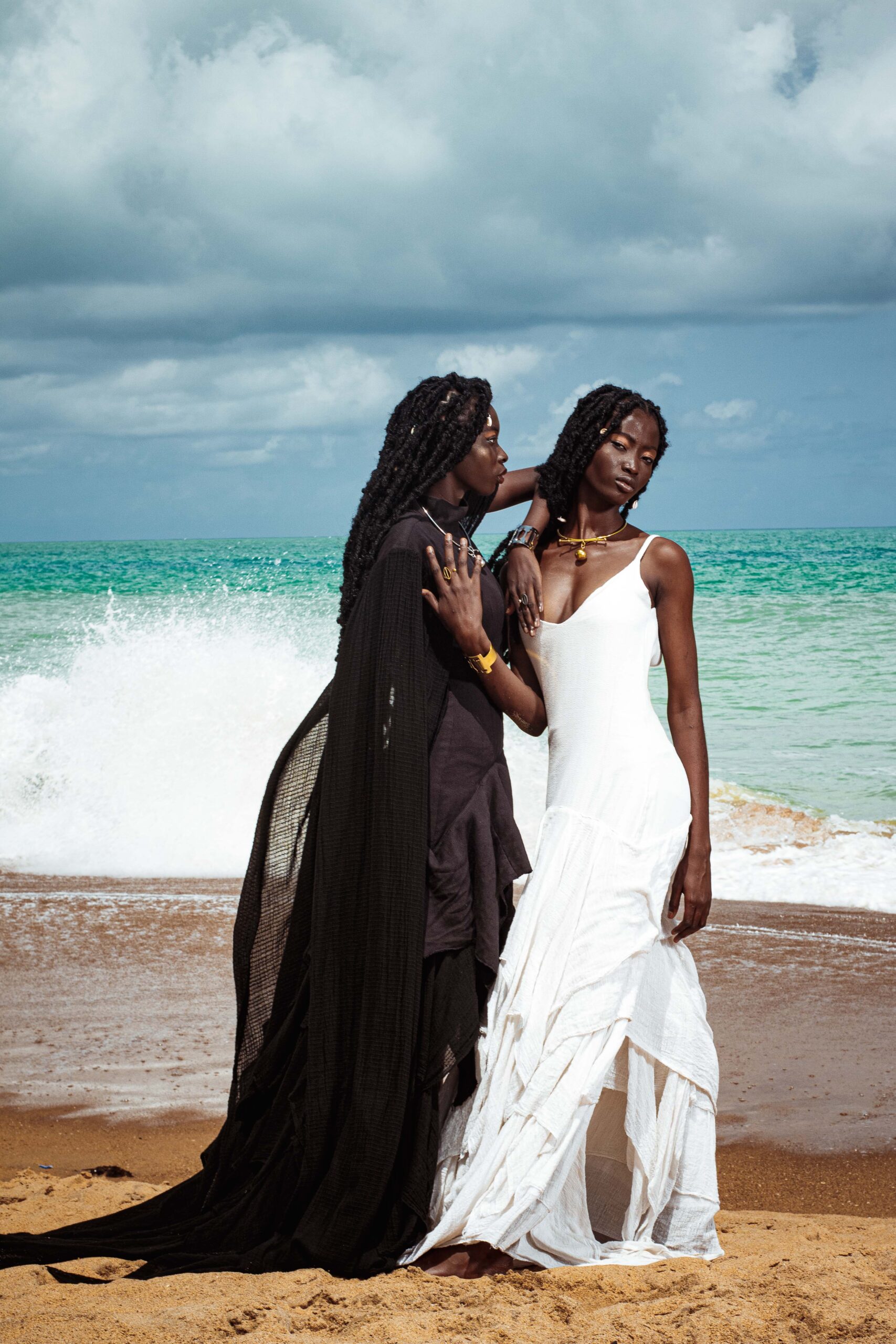He is regarded as the modern-day Thomas Sankara. Kemi Seba is a passionate Panafricanist and a contemporary freedom fighter dedicated to decolonizing Africa mentally, economically, and culturally. Although he was born and raised in France, he is originally from Benin and is known for his roles as a journalist, writer, influential speaker, and politician. He is renowned for his stance against the CFA Franc and Francafrique.
His self-given name, Kemi Seba, translates to “Black Star” in the ancient Egypt (Kemet) language known as Medu Netjer.
Kemi heads a Benin-based NGO called Panafricanist Emergencies, he travels the world to meet his people and our allies, and awaken the Black consciousness. During his recent visit to Ethiopia, where he was presenting his latest book Philosophy of Fundamental Panafricanity, we had the opportunity to interview him and ask him four questions.
Hortense Mbea: Kemi, how would you define your clothing style and what message do you want it to convey?
Kemi Seba: Most of the time, I wear traditional African clothes, with a modern touch. I enjoy wearing handmade textiles such as bazin or bogolan, but African print as well. Occasionally, I also opt for Western suits crafted from African fabrics. Even though I am an African and prefer dressing in a way that honors my heritage, I was born in the West. In the past, I used to reject this aspect of my identity, but I have now grown to embrace it.
H.M: In today’s globalized world, where African culture and identity often face challenges of alienation, how can we promote the wearing of African-made clothing, particularly in professional environments?
K.S: Balance is key. With the influence of globalization and liberalism, Western clothing has become the standard for most people around the world. In order to reconnect Africans with traditional African clothes, we can encourage a gradual transition. Why not start by promoting Africanised Western clothing, made with African textiles, and gradually guide our brothers and sisters back to embracing African attire?
H.M: This same alienation brought on by globalization often comes with the emasculation and feminization of the Black man. It seems to be a rite of passage for Black , non LGBTQIA+, male celebrities to dress as women for photoshoots or movie roles, at some point in their career. This phenomenon reminds me of the degrading practice of “buck breaking” during slavery, where the strongest Black men were subjected to rape and humiliation in front of their loved ones, with the aim of breaking their spirits and eradicating any sense of respect for them.
Do you view the feminization through clothing as trivial or do you believe it to be part of a deliberate strategy? Furthermore, what potential risks do you foresee if this phenomenon becomes widespread?
K.S: This question is both extraordinary and dramatic. You have hit the nail on the head: there is an absolute, engineered will to emasculate the Black man. Using our fashion icons, our Black icons and feminising them serves as a means to encourage society as a whole to embrace this feminization. If the icons and role models are doing it, others will easily follow.
You have to know that Black masculinity is considered a threat to White supremacy. Therefore, their objective is to make every possible attempt to dismantle the Black man, thus destroying the Black family. By destroying the Black family, you destroy Black people. It is urgent that Black people understand that anything to do with the feminization of the Black man cannot be taken lightly, it is social engineering driven by Western oligarchy for our destruction.
H.M: Finally, the whole debate about African print/wax: should we squash it once and for all? Is wax African or not?
K.S: African people are a people of exceptional resilience. There are many things that are foreign to us, but we have adapted them to our reality. Take the Senegalese dish, Tiep Bu Dien, for example. I doubt that it was originally 100% African. Like many other dishes that we have made African but which were imported into Africa during colonial times. We have adopted them, through our resilience. Similarly, African print or Wax which was supposed to be foreign, we have made deeply African. We have made it our own. I do not think we should reject this. Wax has its place alongside African handwoven textiles. It has been fully integrated into our reality and is part of our cultural landscape, now.
Thank you, Kemi. For the words, and for the struggle.
Photo: Graig Labranche, IG @mrlabranche





Top 👍
Merci!
Beautiful. Inspiring.
Thank you!